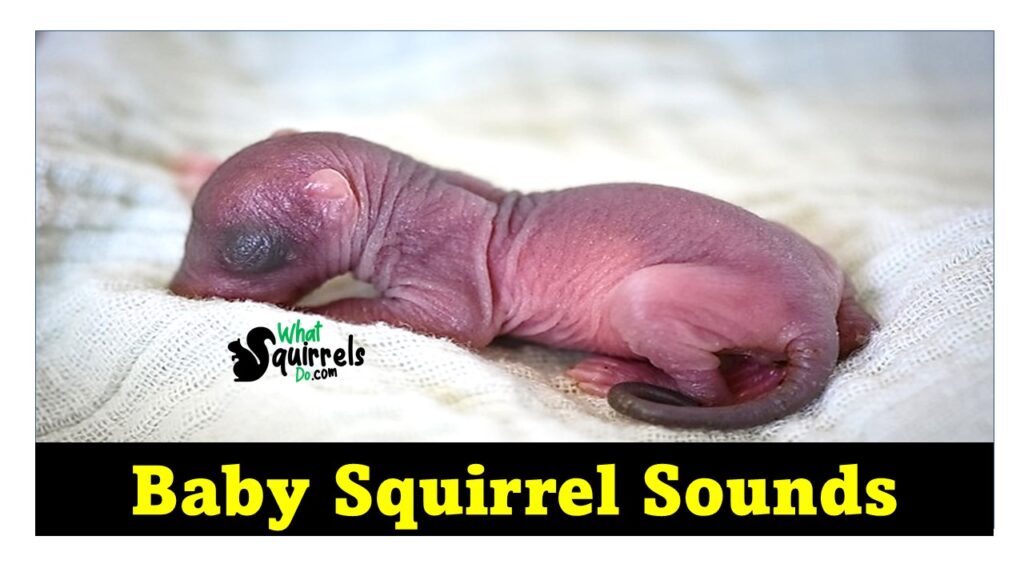If you have a squirrel in your attic or are just curious about the creatures, you might be wondering what squirrel urine smells like and why they urinate, besides the obvious.
Finding someone who knows exactly what squirrel urine smells like is a tough challenge. As you would figure, most people do not put their nose to the ground to whiff up urine after a squirrel has gone to the bathroom.
However, identifying the odor is possible! Especially for those of us who have cleaned our fair share of wild squirrel cages. So this wildlife volunteer will take a stab at describing the aroma of squirrel pee.
Table of Contents - Click to Open
What Does Squirrel Urine Smell Like?
Squirrel urine has an lingering odor that is more ammonia that dog urine, but less ammonia than cat urine. Squirrels will urinate wherever, and whenever they have to go to the bathroom. The smell is also useful for marking their territory, among other ways.
The exact smell largely depends on the squirrel’s diet, which is often determined by its habitat and location. Dehydration can cause a more acidic smell because of the increased ammonia.
Keep reading to learn more about squirrel bathroom habits and what it means for you.
Urine Smells of Wild Squirrels (Rehab)
While pet squirrels can be trained to use litter or puppy pads, wild squirrels simply go as they please. For that reason, hospital volunteers were responsible for cleaning squirrel cages every morning, or 2x per day if the squirrel was in a small enclosure.

The squirrel urine ranged in color from medium yellow to very dark brown. Again, diet, hydration, and health could be determining factors.
Do Squirrels Mark Their Territory?
Just like most other animals, squirrels mark their territory. In fact, squirrels are vicious creatures that will aggressively defend their territory if another squirrel comes by.
The exact method used for territory marking varies from squirrel breed to breed.
Most squirrels mark their territory in one of two ways.
1-Urination Marking
Urination is one of the most frequent forms of territory marking. Squirrel urine contains high amounts of pheromones, which relay specific information to other squirrels.
Pheromones can help to establish territory so that other competing squirrels don’t come near. They also help male squirrels to attract a mate.
We often found urine every corner of a squirrel’s cage, which is a sign of territory marking.

2-Scent Gland Marking
In addition to urination, squirrels can rub scent glands on different objects. Grey squirrels have scent glands specifically around their mouths.
These scent glands come in handy whenever the squirrel is on the run or does not need to go to the bathroom. If you notice a squirrel running around and stopping to rub its face on items, it is marking its territory.
Risks Associated With Squirrel Urine
In addition to being smelly, squirrel urine can be unhealthy for other wildlife, humans, and curious, sniffing, dogs. Some most common dangers that could be lingering in squirrel urine include squirrel pox, leptospirosis, salmonellosis.
For those reasons, let’s talk about getting rid of squirrel urine.
How To Clean Squirrel Urine
Because squirrel urine could be hazardous in addition to smelly, it’s imperative to always clean up squirrel urine if it is inside your home. Here is what you will need to do to disinfect the area:
1. Get Rid of the Squirrel
If you see you see squirrel urine and feces around your home, you need to get rid of the squirrel problem. If your area allows it, set up humane traps to help trap the squirrel so that you can release it into the wild. You can also hire a professional to do this job for you and in some states it MUST be done by a wildlife pro.
2. Protect Yourself
When it comes time to clean, begin by protecting yourself. Invest in a disposable jumpsuit, a face mask, rubber gloves, and booties or plastic bags to put over your shoes. This safety gear will help to keep you safe from potential diseases. The last safety step is to open the window just to add some extra ventilation in the area.
3. Spray With Water
Get a spray bottle and soak the affected area for about 20 minutes. This step helps to keep the feces particles in place and prevents them from becoming airborne.
4. Pick Up Feces
If there are any feces around the urination, manually pick these up either by hand or with a HEPA filtered vacuum.
5. Clean the Affected Area
Now that the feces are out of the way, use an enzymatic cleaner on the affected area. This enzymatic cleaner will help to destroy the pheromones, urine, feces, and all other dangerous germs. Follow the instructions on the enzymatic cleaner of your choosing.
If the enzymatic cleaner is not doing the job, you might need to use bleach. The only reason why we do not recommend using bleach first is that it will bleach and damage any fabrics that might be affected by the urine.
6. Repair Damage
One squirrel won’t do a lot of damage to your home, but a squirrel infestation will. If your entire home is infested, you will likely need to repair damage to the actual structure of your home.
Final Thoughts
Squirrel urine smells unpleasant to humans, but it relays important information to other squirrels. It is for this reason that squirrels urinate to mark their territory, though they mark with other methods as well.
If you have squirrels in your home, it’s imperative to clean up the mess and get rid of the squirrels. As cute as squirrels may be, their urine and feces could be hazardous to you, your pets, and other wildlife.
After you have cleaned up the area and gotten rid of the squirrels, try to determine how the squirrels got in so you can prevent them from doing so in the future.
Head back to our homepage for more squirrely fun.






